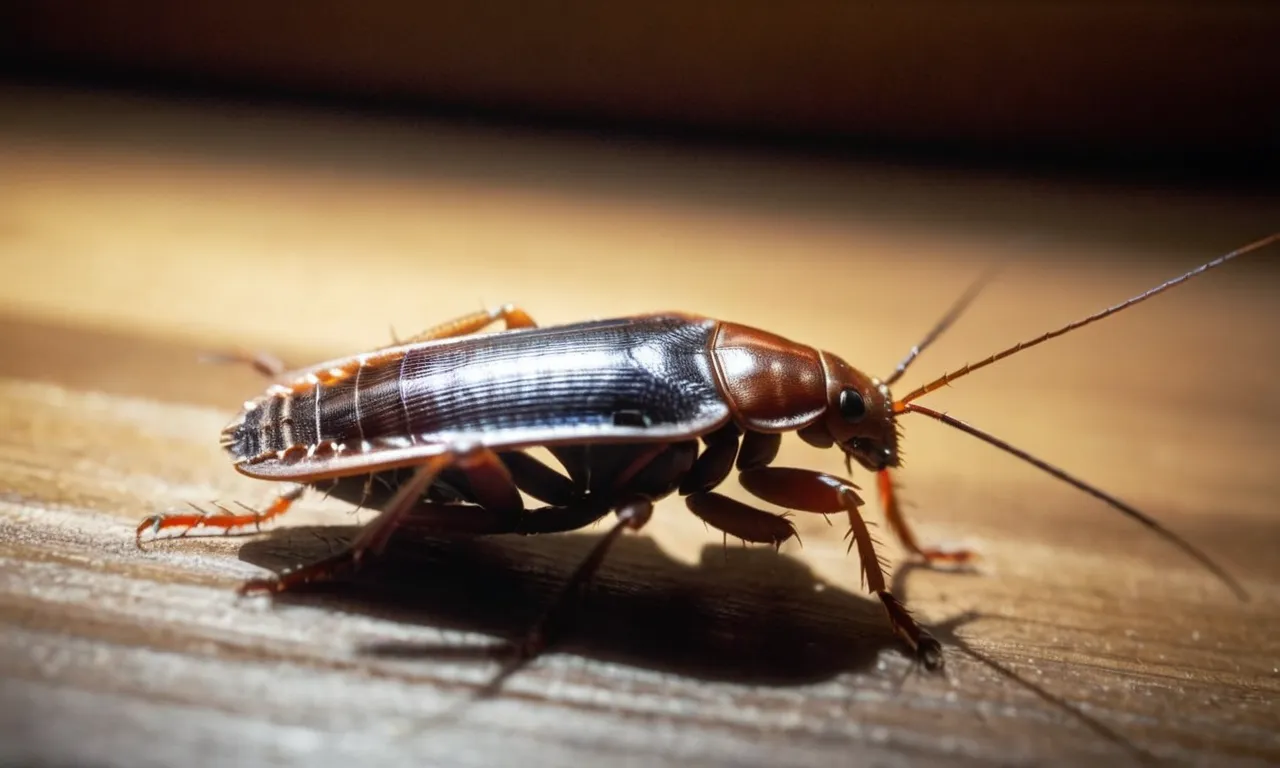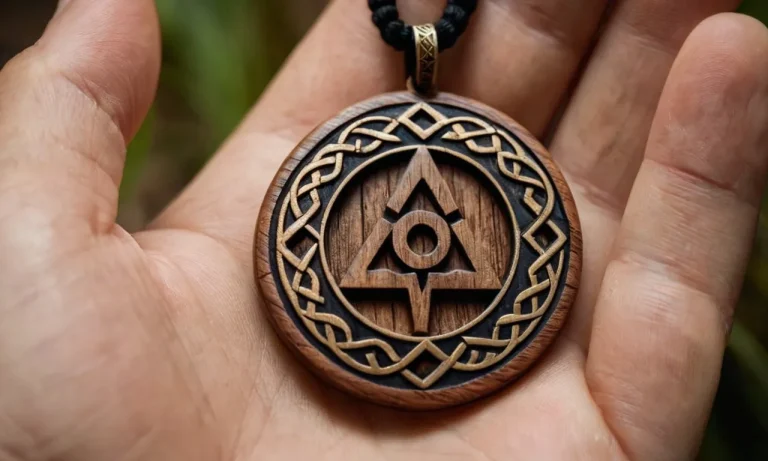Why Did God Create Cockroaches?
Cockroaches have been around since the days of dinosaurs over 320 million years ago. Their ability to survive and adapt makes many wonder – why did God create cockroaches in the first place? If you’re short on time, here’s a quick answer to your question: God created cockroaches as part of His grand design of nature to play an important role in the planet’s complex ecosystems.
In this article, we will explore the various theological and scientific theories on the purpose and origins of the much maligned yet fascinating cockroach.
Theological Perspectives on the Purpose of Cockroaches
Cockroaches as Part of God’s Diverse Creation
Many theologians argue that God created all creatures, including cockroaches, for a divine purpose. As part of God’s diverse creation, cockroaches fill an ecological niche, serve as food for other animals, aid in decomposition, and participate in nutrient cycles.
For example, cockroaches are an important source of food for species like frogs, lizards, mice, and birds. Their bodies contain nutrients essential for these animals’ survival. By being part of the food chain, cockroaches thus contribute to sustaining God’s creation.
Additionally, cockroaches feed on decaying organic matter, helping break it down and release nutrients back into the soil and environment. This supports plant growth and the overall health of many ecosystems. So while humans may dislike cockroaches, they play vital roles within God’s world.
Cockroaches and the Problem of Evil and Suffering
However, some philosophers of religion argue that the mere existence of pests like cockroaches undermines arguments that God is perfectly good and caring. They believe an all-powerful, all-loving God would not create creatures that spread germs and cause human suffering.
But others counter that God gave humans responsibility over creation, including authority to manage destructive organisms. Difficulties caused by cockroaches and other pests may motivate innovation in areas like medicine, construction, and urban planning, bringing about higher-order goods.
Additionally, coping with cockroaches builds virtues like resilience, cleanliness, and determination.
While the debate continues, most scholars agree humans must steward creation responsibly, as the Bible teaches. This includes studying how ecosystems work symbiotically while controlling pests through ethical means when necessary.
Cockroaches as a Symbol of Tenacity and Survival
Given cockroaches’ ability to endure harsh conditions and evade threats, they have become cultural symbols of tenacity and survival. Their evolutionary adaptations, like their compressed bodies allowing them to squeeze through tiny spaces, inspire scientists studying topics like flexible robotics.
Theological perspectives that emphasize hope amidst suffering see cockroaches as representing “survival of the fittest”. Just as species evolve and adapt over time, some argue the endurance of cockroaches reflects humans’ tenacity.
Historically, cultures and civilizations crumble but humanity continues moving forward.
Cockroaches encapsulate a kind of “evolutionary optimism” within creation. And for every human challenge we face, whether war, disease, or hardship, we have shown a god-like resilience. Our cultures and technologies progress, evidence of God’s purpose and fingerprints within his creation.
Scientific Theories on the Evolution and Benefits of Cockroaches
Evolutionary Origins and Adaptations
Cockroaches are estimated to have originated around 320 million years ago during the Carboniferous period. Existing as early insects alongside dragonflies and mayflies, cockroaches were able to survive where other species went extinct. Their hardy adaptations helped them thrive and spread globally.
Key evolutionary adaptations that aid cockroach survival include:
- Flat body shape allowing them to squeeze into tight spaces.
- Spiny legs to help them walk on various surfaces.
- High fertility with females producing multiple egg cases in a lifetime.
In addition, cockroaches exhibit behavioral adaptations such as avoiding light, seeking shelter and debris, and being most active at night. Their innate drive to find food, water, and mates further enable them to endure harsh environments.
Cockroaches continue evolving, with over 4500 species identified today.
Ecological Roles and Impacts
While often seen as household pests, cockroaches fill important ecological niches in nature. As scavengers and decomposers, cockroaches break down organic waste like fallen leaves, animal carcasses, and feces. This recycling of nutrients benefits the ecosystem.
Cockroaches themselves also serve as an abundant food source. Various animals like birds, reptiles, amphibians, spiders, and other insects prey on cockroaches. So despite human aversion, cockroaches help sustain food chains.
However, pest cockroaches attracted to human habitats can also transmit bacteria through their feces and saliva. Cockroach allergens are also a major indoor asthma trigger. Balancing their essential roles in nature with mitigating home infestations remains an ongoing need.
Cockroach Anatomy and Behaviors
Cockroaches exhibit specialized anatomy and behaviors that facilitate their survival:
- Hardened external skeleton for protection.
- Compound eyes providing a wide field of vision.
- Powerful mandibles for chewing food.
- Spiracles on body segments allowing air intake.
- Cerci sensing air movement like “antennae”.
Key behaviors include:
- Nocturnal activity with peak foraging at night.
- Omnivorous eating habits consuming plant and animal matter.
- Grooming behaviors to clean bodily surfaces.
- Social aggregation under shelters and crevices.
Their anatomy facilitates rapid running and squeezing into tight areas when threatened. Disgusting as some may find them, cockroaches are remarkably engineered for survival!
Symbolic Meanings and Cultural Perceptions of Cockroaches
Cockroaches as Tricksters and Shape-Shifters
In many cultures, cockroaches are seen as tricky, crafty creatures that are adept at hiding and transforming themselves. Their ability to compress their bodies and fit into the tiniest of cracks leads to associations with shape-shifting and concealment.
For example, in Chinese folk stories, the cockroach represents a mischievous trickster archetype. In Native American tales, the cockroach is a magical transformer and messenger between worlds.
Cockroaches’ persistence and adaptability have also led to their characterization as survivalists or harbingers of radical change. For instance, in a popular Brazilian legend, cockroaches were the only creatures to survive a great flood that cleansed the earth. The meaning?
No matter how extreme the circumstances, cockroaches endure. This taps into their perceived hardiness and evolution without drastic change over millions of years.
Cockroaches as Harbingers of Disease and Filth
On the negative end of the symbolic spectrum, cockroaches are often associated with disease, uncleanliness, and filth. This perception stems largely from their tendencies to feed on refuse and thrive in unsanitary environments congenial to pathogens.
Historically, the onset of cockroach infestations in urban centers and slums has preceded outbreaks of cholera, typhus, dysentery, and plague.
A 2022 study published in Canada found cockroaches carry drug-resistant “superbugs,” underscoring their image as harbingers of contamination. The University of Surrey warned urban infestations could exacerbate antimicrobial resistance.
This association of cockroaches with disease and uncleanliness causes disgust and vilification. For example, Nazi propaganda films portrayed Jews metaphorically as cockroaches. However, while cockroaches potentially spread bacteria, only around 1% of species come into contact with humans.
Positive Symbolic Meanings in Some Cultures
Contrary to predominantly negative Western perceptions, cockroaches have more positive symbolic connotations in some cultures. For example, across much of Asia, the cockroach symbolizes values like resilience, fertility, and longevity.
In Chinese culture, cockroaches signify prosperity and are tied to the myths of survived floods. The Volkswagen Beetle’s design was partly inspired by a cockroach’s rounded shell, capitalizing on positive attributes like efficiency and reliability rather than disgust.
In rice-growing regions of Southeast Asia, cockroaches are seen as bringers of rain, protectors of crops, and embodiments of supernatural spirits. Killing them is considered taboo. Comparatively verminous animals like rats are regarded as far more repulsive than the innocuous cockroach.
Practical Uses and Scientific Research on Cockroaches
Cockroaches as Animal Feed and Medicinal Ingredients
Cockroaches have been used as an animal feed source for chickens, pigs, and fish for centuries in many parts of the world. About 80% of a cockroach’s body is edible protein, making them a highly nutritious supplement to regular feed.
When dried and processed into a meal, cockroaches can contain up to 60% protein, as well as essential amino acids and vitamins like B12. Research has shown including 10-15% cockroach meal can significantly improve weight gain and feed efficiency in chickens and pigs.
Various folk medicine traditions have utilized cockroaches for their medicinal properties. In China, the cockroach has been used for wound healing, tissue repair, and to treat burns or skin infections. Compounds derived from cockroaches have shown potential antibacterial effects in initial studies.
However, more research is needed to fully understand any medical benefits.
Studying Cockroaches for Scientific Advancement
Cockroaches have been invaluable study subjects advancing our scientific understanding. Their nervous system has similarities with mammals, making cockroaches ideal models for neuroscience research. Studies on cockroach brains and sensory organs have provided insights on how neural networks process information.
Research on cockroach locomotion led to the development of an algorithm that contributed to early walking robots. The cockroach’s ability to withstand radiation far beyond humans has been examined to identify cell mechanisms and DNA repair pathways for radiation therapy improvements.
Cockroaches exhibit complex social behavior such as information transfer about food locations. Understanding cockroach group dynamics provides evolutionary biologists broader knowledge on collective behavior and communication.
Examining cockroach mating systems and reproduction has also furthered insect behavioral ecology. Overall, ongoing exploration of the biology and behavior of cockroaches will likely continue providing new revelations across scientific fields.
Cockroach Inspired Robotics and Technologies
The remarkable mobility and adaptability of cockroaches have inspired cutting-edge robotics research. Cockroaches can quickly maneuver tight spaces, climb over obstacles, and survive falls due to their low center of gravity and sprawled-posture legs.
These capabilities have been studied to create search-and-rescue robots that can access disaster rubble. Cockroach-mimicking legged robots have been built using flexible actuators that provide stability and can squeeze through cracks.
Researchers at UC Berkeley created a robot called CRAM that uses cockroach-inspired origami joints to squish and crawl.
Nanotechnology has taken clues from the cockroach’s super water-resistant exterior shell. Structures that mimic the microscopic ridges and wax crystals on cockroach surfaces are being incorporated into highly water-repellent materials and anti-fog coatings.
Other cockroach adaptations like antibacterial mouthparts, bacteria-fighting blood, and rapid wound healing are also being explored for bioengineering innovations.
Conclusion
While the debate continues on why God made cockroaches and what purpose they serve, their resilience and ubiquity prove they are here to stay. Understanding their origins, roles, and meanings can help us coexist with these uninvited yet intriguing guests.
In the end, cockroaches remain one small part of God’s vast and complex design for life on Earth. Their endurance poses important philosophical questions, while also providing practical benefits for ecosystems and scientific research. Even the most maligned creatures have their place in creation.








